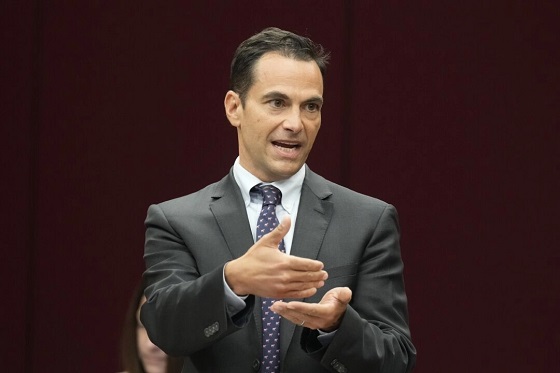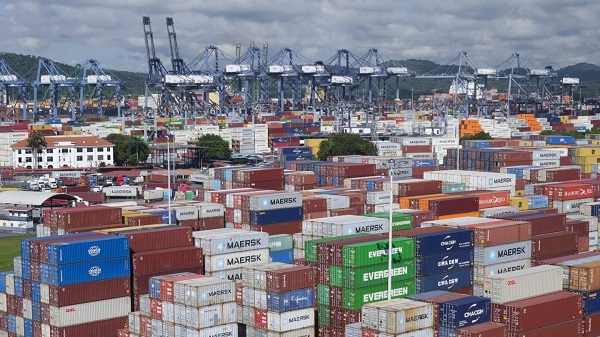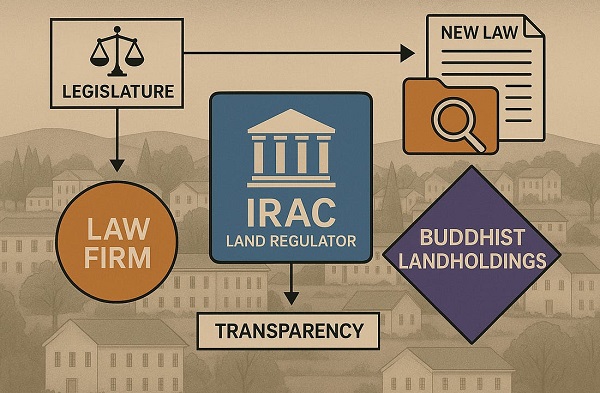Business
Trudeau’s Delusion Meets Trump’s Tariffs: 25% Hit on Canada and Mexico Could Cripple Economies Overnight!

In a fiery Truth Social post on November 25th, Donald Trump made his position crystal clear: the days of open borders, unchecked drug smuggling, and illegal immigration are over. The president-elect, set to take office in January, declared that one of his first actions as commander-in-chief will be to slap a 25% tariff on all goods from Mexico and Canada until both nations “use their absolute right and power” to stop the flow of drugs and illegal immigrants into the United States.
The Trump Doctrine Returns
This announcement serves as a bold reminder of Trump’s “America First” strategy, which dominated his first presidency. According to Trump, the current state of the U.S.-Mexico border is a “national emergency,” with caravans from Mexico allegedly bringing record levels of drugs like fentanyl and waves of illegal migrants. Canada isn’t off the hook either, as Trump accuses Justin Trudeau’s government of maintaining what he calls “ridiculous open borders” that have contributed to the crisis.
“Both Mexico and Canada have the absolute right and power to easily solve this long-simmering problem,” Trump stated. “Until such time that they do, it is time for them to pay a very big price!”
Economic Weapons Locked and Loaded
The proposed tariffs are no small matter. A 25% import tax on goods from Canada and Mexico could cripple their export-driven economies, both of which are heavily reliant on U.S. trade:
- Mexico: Over 80% of its exports head to the U.S. A 25% tariff would devastate industries like auto manufacturing, agriculture, and electronics.
- Canada: With 75% of exports destined for the U.S., Canadian businesses are bracing for significant disruptions to key sectors, including energy and auto parts.
Experts warn that these tariffs would also raise prices for American consumers. But Trump’s post signals he’s unfazed by potential backlash. “It’s time for these countries to pay a very big price,” he declared, echoing his tough-on-trade rhetoric from the 2016 campaign trail.
The Bureau – Canada’s Role in the Fentanyl Epidemic
According to The Bureau, U.S. investigators have uncovered a direct connection between Canadian cities—particularly Toronto and Vancouver—and transnational fentanyl money-laundering networks. These networks, allegedly run by Triads with ties to Beijing, are laundering cash for Mexican cartels smuggling fentanyl precursors from China.
David Asher, a former Trump administration official and DEA consultant, didn’t mince words in his interview with The Bureau. He stated that U.S. intelligence points to Canada as the “command and control” hub for these networks, which have fueled the devastating fentanyl crisis.
“When we seized their phones, we’d see Canada light up like a Christmas tree,” Asher said, highlighting how Toronto and British Columbia play central roles in these operations.
Canada’s Tariff Crisis: The Numbers Don’t Lie
Let’s dig into the cold, hard facts, courtesy of the Canadian Chamber of Commerce, and they’re downright devastating. Trump’s proposed tariffs aren’t just a political statement—they’re an economic wrecking ball aimed squarely at Canada’s most vulnerable industries. For Justin Trudeau’s government and hapless premiers like David Eby, these numbers are a brutal wake-up call.
The Trade Dependency Trap
Canada’s economic lifeblood is deeply tied to the United States, with 41% of Ontario’s GDP and a staggering two-thirds of New Brunswick’s GDP linked to cross-border trade. And it’s not just Canada feeling the squeeze—states like Michigan (14% GDP dependency) and Illinois (10.2%) rely heavily on Canadian trade.
The kicker? Nearly 63% of Canadian exports to the U.S. are intermediate inputs, meaning they’re critical components for American manufacturing. Canada isn’t just exporting products; it’s exporting the gears that keep U.S. industries turning.
Energy and Autos: The Collateral Damage
Consider this: in the first half of 2024 alone, Canada exported $85 billion in energy and $40 billion in auto parts to the U.S. A 25% tariff would obliterate these sectors, dragging down both economies in the process. And while Trudeau and his team posture about “standing united,” it’s clear their lack of preparation will only deepen the pain for Canadians.
Tariff Fallout: A National Recession Looms
The numbers paint a grim picture: a 25% tariff would deliver a 2.6% GDP decline annually for Canada, costing the average Canadian $2,000 CAD per year in lost income. Add in retaliatory tariffs, and this spirals into a full-blown recession, with cascading impacts on productivity, supply chains, and jobs.
- Auto/Transport Exports: Down 10 percentage points.
- Basic Metals Exports: Down 9 percentage points.
- Chemicals and Paper Products: Exports drop by 8% and 7%, respectively.
- Overall Sector Decline: A staggering 22 percentage points for critical industries.
Meanwhile, cross-border investment—once a pillar of Canada-U.S. relations—is under threat. Canadian investments in the U.S. total $1.1 trillion, but a tariff war risks destabilizing these flows and gutting the broader economic relationship.
Last Weeks Spin Piece from the Canadian Press
As we look at the fallout from Trump’s 25% tariff announcement, let’s take a moment to laugh at this spin piece from the Canadian Press that came out just last week. The article tried to paint a picture of Canada’s Foreign Affairs Minister Mélanie Joly claiming that Donald Trump’s return to the White House has somehow boosted Canada’s influence on the world stage. Yes, you heard that right—Canada, the same country with open borders, an overreliance on U.S. trade, and a prime minister whose leadership is about as effective as a broken clock, is supposedly advising the world on how to handle Trump.
Joly boldly declared from the Asia-Pacific Economic Cooperation summit in Lima, “No country understands the United States better than Canada.” According to her, nations are lining up to learn from Canada’s experience with Trump, as though Trudeau and his team have some masterclass on navigating Trump’s policies. Fast forward to today, with Trump poised to slam Canada with tariffs that could destroy their economy, and the absurdity of this claim is glaring.
This narrative that Canada is a calm, steady hand amid Trump’s return is nothing more than a fantasy. While Joly and Trudeau were hobnobbing at summits, Trump was gearing up to deliver real consequences. His 25% tariff on Canadian imports isn’t hypothetical—it’s a financial wrecking ball aimed at an economy that relies on U.S. trade for survival. Energy exports, autos, and agriculture—the pillars of Canada’s economy—will take a direct hit. But instead of preparing for this, Joly was busy spinning a tale of Canada’s supposed “influence.”
And let’s not forget what Joly was selling in that article. “Canada’s influence is actually increasing because of the impacts that the world is now facing with the new administration.” Increasing? On what planet? Trump’s tariffs make it clear that Canada isn’t leading anything; it’s scrambling to react.
The article also floated the idea that Trudeau was in a “privileged position” because of his past dealings with Trump. Let’s recall how that went, shall we? Trudeau was caught mocking Trump on a hot mic during a G7 summit, embarrassing himself and the country in front of world leaders. His government barely held onto a renegotiated NAFTA—now the USMCA—that Trump rewrote to suit America’s interests. If this is the kind of experience Trudeau brings to the table, it’s no wonder Canada is in trouble.
Meanwhile, the Canadian Press tries to prop up Trudeau as some staunch defender of “rules-based trade,” as though those rules mean anything when Trump has the leverage to rewrite them. Joly spoke about sending “clear messages” to Beijing, yet Trump’s tariff threats expose just how little Canada has done to address the very issues Trump is targeting. Let’s not forget The Bureau’s report on Canada’s role in fentanyl money laundering, with Toronto and Vancouver lighting up as command centers for Triads laundering cash from Mexican cartels. Canada’s failures are part of the problem Trump is confronting.
And here’s the kicker: as of today, neither Trudeau nor Joly has made a peep about Trump’s tariff announcement. No tweets, no press statements, no leadership—just silence. So much for being the world’s go-to expert on Trump. Canada’s leaders are AWOL while Trump tightens the economic screws.
While our beloved PM is silent, Jagmeet Singh, ever the opportunist, couldn’t resist wading into the chaos with his usual brand of hollow theatrics. “Stand up and fight like hell,” he bellowed at Justin Trudeau on Twitter, as though anyone has ever mistaken Singh for a warrior of any kind. Let’s be honest—Singh’s idea of “fighting like hell” probably involves drafting another toothless motion in Parliament or throwing shade on social media while offering zero solutions. This is the same guy who props up Trudeau’s government with his NDP-Liberal supply-and-confidence deal, enabling the very weakness he’s now trying to criticize. Spare us the tough talk, Jagmeet. Bootlicking Trudeau one day and grandstanding the next doesn’t exactly scream credibility.
And as for Trudeau and Mélanie Joly? Their performance over the last week has been nothing short of delusional. While Trump was setting the stage to unleash a 25% tariff that could dismantle Canada’s economy, Trudeau was busy posturing at international summits and snapping photos with global elites. Joly, for her part, claimed that Trump’s return to power somehow boosted Canada’s global influence—because apparently being a punching bag now counts as diplomacy.
This isn’t global influence; it’s global irrelevance. The Trudeau government spent the last week basking in delusion while Trump was preparing to drop the hammer. And now the clock has run out. Stay tuned—because while Trudeau dithers and Singh flails, the reckoning is here.
Final Thoughts
Trump campaigned on a clear and powerful message: tariffs are a weapon to protect American workers and restore national sovereignty. And, folks, he wasn’t wrong. Sure, input costs might rise. Sure, a few elites will clutch their pearls as their profits shrink. But this isn’t about them. This is about something bigger. It’s about standing up for the forgotten workers in Michigan, Ohio, and Wisconsin who’ve watched their livelihoods vanish thanks to decades of globalist betrayal. Trump’s message is loud and clear: no more one-sided trade deals, no more globalist bull. America comes first.
And what about Canada? What has Justin Trudeau done? He’s alienated an entire nation while dividing our own country with his disastrous, virtue-signaling policies. Trudeau doesn’t just dislike the West—he actively works against it. The West pays the bills in this country, folks. Alberta’s oil sands, Saskatchewan’s agriculture, and British Columbia’s resources prop up this nation’s economy. And how does Trudeau repay them? By demonizing their industries, their workers, and their very way of life to appease his climate cult.
While Trudeau struts on the world stage preaching green fantasies, the West bears the cost. It’s their jobs, their industries, and their communities that are hollowed out to fund his carbon tax schemes. Now, with Trump’s tariffs about to slam Canada’s economy, the true cost of Trudeau’s failures is finally coming home to roost.
How can Canada face this crisis when our so-called leader is more concerned with photo ops, platitudes, and meaningless “climate leadership” than standing up for our country? Trudeau has alienated our most important trading partner, antagonized the West, and is now leaving us unprepared for a showdown with Trump’s America.
Let’s look at the facts. Canada is at odds with China, embroiled in a cold war with India, and now staring down Trump’s tariffs. Every move Trudeau makes puts us further into isolation, weaker and more vulnerable. So here’s the question: can we really afford another year of this man at the helm?
The Trudeau government has run out of excuses, out of allies, and now, out of time. This isn’t just about whether Canada can survive Trump’s tariffs. It’s about whether we can survive another year of Justin Trudeau’s leadership. The reckoning is here, and Canada deserves better.
Business
Parliamentary Budget Officer begs Carney to cut back on spending

PBO slices through Carney’s creative accounting
The Canadian Taxpayers Federation is calling on Prime Minister Mark Carney to cut spending following today’s bombshell Parliamentary Budget Officer report that criticizes the government’s definition of capital spending and promise to balance the operating budget.
“The reality is that Carney is continuing on a course of unaffordable borrowing and the PBO report shows government messaging about ‘balancing the operating budget’ is not credible,” said Franco Terrazzano, CTF Federal Director. “Carney is using creative accounting to hide the spiralling debt.”
Carney’s Budget 2025 splits the budget into operating and capital spending and promises to balance the operating budget by 2028-29.
However, today’s PBO budget report states that Carney’s definition of capital spending is “overly expansive.” Without using that “overly expansive” definition of capital spending, the government would run an $18 billion operating deficit in 2028-29, according to the PBO.
“Based on our definition, capital investments would total $217.3 billion over 2024-25 to 2029-30, which is approximately 30 per cent ($94 billion) lower compared to Budget 2025,” according to the PBO. “Moreover, based on our definition, the operating balance in Budget 2025 would remain in a deficit position over 2024-25 to 2029-30.”
The PBO states that the Carney government is using “a definition of capital investment that expands beyond the current treatment in the Public Accounts and international practice.” The report specifically points out that “by including corporate income tax expenditures, investment tax credits and operating (production) subsidies, the framework blends policy measures with capital formation.”
The federal government plans to borrow about $80 billion this year, according to Budget 2025. Carney has no plan stop borrowing money and balance the budget. Debt interest charges will cost taxpayers $55.6 billion this year, which is more than the federal government will send to the provinces in health transfers ($54.7 billion) or collect through the GST ($54.4 billion).
“Carney isn’t balancing anything when he borrows tens of billions of dollars every year,” Terrazzano said. “Instead of applying creative accounting to the budget numbers, Carney needs to cut spending and debt.”
Business
Carney government needs stronger ‘fiscal anchors’ and greater accountability

From the Fraser Institute
By Tegan Hill and Grady Munro
Following the recent release of the Carney government’s first budget, Fitch Ratings (one of the big three global credit rating agencies) issued a warning that the “persistent fiscal expansion” outlined in the budget—characterized by high levels of spending, borrowing and debt accumulation—will erode the health of Canada’s finances and could lead to a downgrade in Canada’s credit rating.
Here’s why this matters. Canada’s credit rating impacts the federal government’s cost of borrowing money. If the government’s rating gets downgraded—meaning Canadian federal debt is viewed as an increasingly risky investment due to fiscal mismanagement—it will likely become more expensive for the government to borrow money, which ultimately costs taxpayers.
The cost of borrowing (i.e. the interest paid on government debt) is a significant part of the overall budget. This year, the federal government will spend a projected $55.6 billion on debt interest, which is more than one in every 10 dollars of federal revenue, and more than the government will spend on health-care transfers to the provinces. By 2029/30, interest costs will rise to a projected $76.1 billion or more than one in every eight dollars of revenue. That’s taxpayer money unavailable for programs and services.
Again, if Canada’s credit rating gets downgraded, these costs will grow even larger.
To maintain a good credit rating, the government must prevent the deterioration of its finances. To do this, governments establish and follow “fiscal anchors,” which are fiscal guardrails meant to guide decisions regarding spending, taxes and borrowing.
Effective fiscal anchors ensure governments manage their finances so the debt burden remains sustainable for future generations. Anchors should be easily understood and broadly applied so that government cannot get creative with its accounting to only technically abide by the rule, but still give the government the flexibility to respond to changing circumstances. For example, a commonly-used rule by many countries (including Canada in the past) is a ceiling/target for debt as a share of the economy.
The Carney government’s budget establishes two new fiscal anchors: balancing the federal operating budget (which includes spending on day-to-day operations such as government employee compensation) by 2028/29, and maintaining a declining deficit-to-GDP ratio over the years to come, which means gradually reducing the size of the deficit relative to the economy. Unfortunately, these anchors will fail to keep federal finances from deteriorating.
For instance, the government’s plan to balance the “operating budget” is an example of creative accounting that won’t stop the government from borrowing money each year. Simply put, the government plans to split spending into two categories: “operating spending” and “capital investment” —which includes any spending or tax expenditures (e.g. credits and deductions) that relates to the production of an asset (e.g. machinery and equipment)—and will only balance operating spending against revenues. As a result, when the government balances its operating budget in 2028/29, it will still incur a projected deficit of $57.9 billion when spending on capital is included.
Similarly, the government’s plan to reduce the size of the annual deficit relative to the economy each year does little to prevent debt accumulation. This year’s deficit is expected to equal 2.5 per cent of the overall economy—which, since 2000, is the largest deficit (as a share of the economy) outside of those run during the 2008/09 financial crisis and the pandemic. By measuring its progress off of this inflated baseline, the government will technically abide by its anchor even as it runs relatively large deficits each and every year.
Moreover, according to the budget, total federal debt will grow faster than the economy, rising from a projected 73.9 per cent of GDP in 2025/26 to 79.0 per cent by 2029/30, reaching a staggering $2.9 trillion that year. Simply put, even the government’s own fiscal plan shows that its fiscal anchors are unable to prevent an unsustainable rise in government debt. And that’s assuming the government can even stick to these anchors—which, according to a new report by the Parliamentary Budget Officer, is highly unlikely.
Unfortunately, a federal government that can’t stick to its own fiscal anchors is nothing new. The Trudeau government made a habit of abandoning its fiscal anchors whenever the going got tough. Indeed, Fitch Ratings highlighted this poor track record as yet another reason to expect federal finances to continue deteriorating, and why a credit downgrade may be on the horizon. Again, should that happen, Canadian taxpayers will pay the price.
Much is riding on the Carney government’s ability to restore Canada’s credibility as a responsible fiscal manager. To do this, it must implement stronger fiscal rules than those presented in the budget, and remain accountable to those rules even when it’s challenging.
-

 Frontier Centre for Public Policy1 day ago
Frontier Centre for Public Policy1 day agoRichmond Mayor Warns Property Owners That The Cowichan Case Puts Their Titles At Risk
-

 National2 days ago
National2 days agoConservative bill would increase penalties for attacks on places of worship in Canada
-

 armed forces2 days ago
armed forces2 days agoCanadian veteran says she knows at least 20 service members who were offered euthanasia
-

 Business1 day ago
Business1 day agoMark Carney Seeks to Replace Fiscal Watchdog with Loyal Lapdog
-

 Alberta2 days ago
Alberta2 days agoHow economic corridors could shape a stronger Canadian future
-

 Business1 day ago
Business1 day agoSluggish homebuilding will have far-reaching effects on Canada’s economy
-

 COVID-191 day ago
COVID-191 day agoMajor new studies link COVID shots to kidney disease, respiratory problems
-

 Business1 day ago
Business1 day agoP.E.I. Moves to Open IRAC Files, Forcing Land Regulator to Publish Reports After The Bureau’s Investigation













